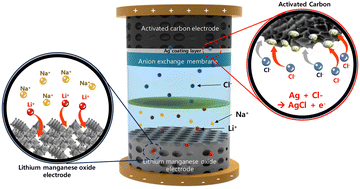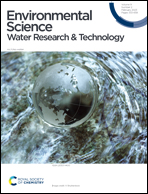Lithium-selective hybrid capacitive deionization system with a Ag-coated carbon electrode and stop-flow operation†
Abstract
With the expansion of the battery industry and the increase in the generation of waste batteries, lithium (Li) recovery technology is attracting attention. In particular, the advancements in the electrochemically mediated Li recovery technology have progressed with the development of Li-selective electrodes, such as lithium manganese oxide (LMO). However, developing a suitable counter electrode with increased Li recovery performance remains necessary. In this study, we report a Li-selective recovery process based on a hybrid capacitive deionization technology comprising LMO and silver (Ag)-coated activated carbon (AC) electrodes. The Ag coating resulted in enhanced Li uptake by 32% compared to the system using the pristine AC counter electrode. In addition, the selectivity coefficient for Li+ was also increased through the introduction of an improved operating technique called “stop-flow operation”. The resulting Li selectivity coefficient over competing ions (e.g., Na+) increased up to 171. These results are expected to contribute to the development of electrochemical-based Li recovery technology by providing novel insights into the integrated system design and process optimization.



 Please wait while we load your content...
Please wait while we load your content...